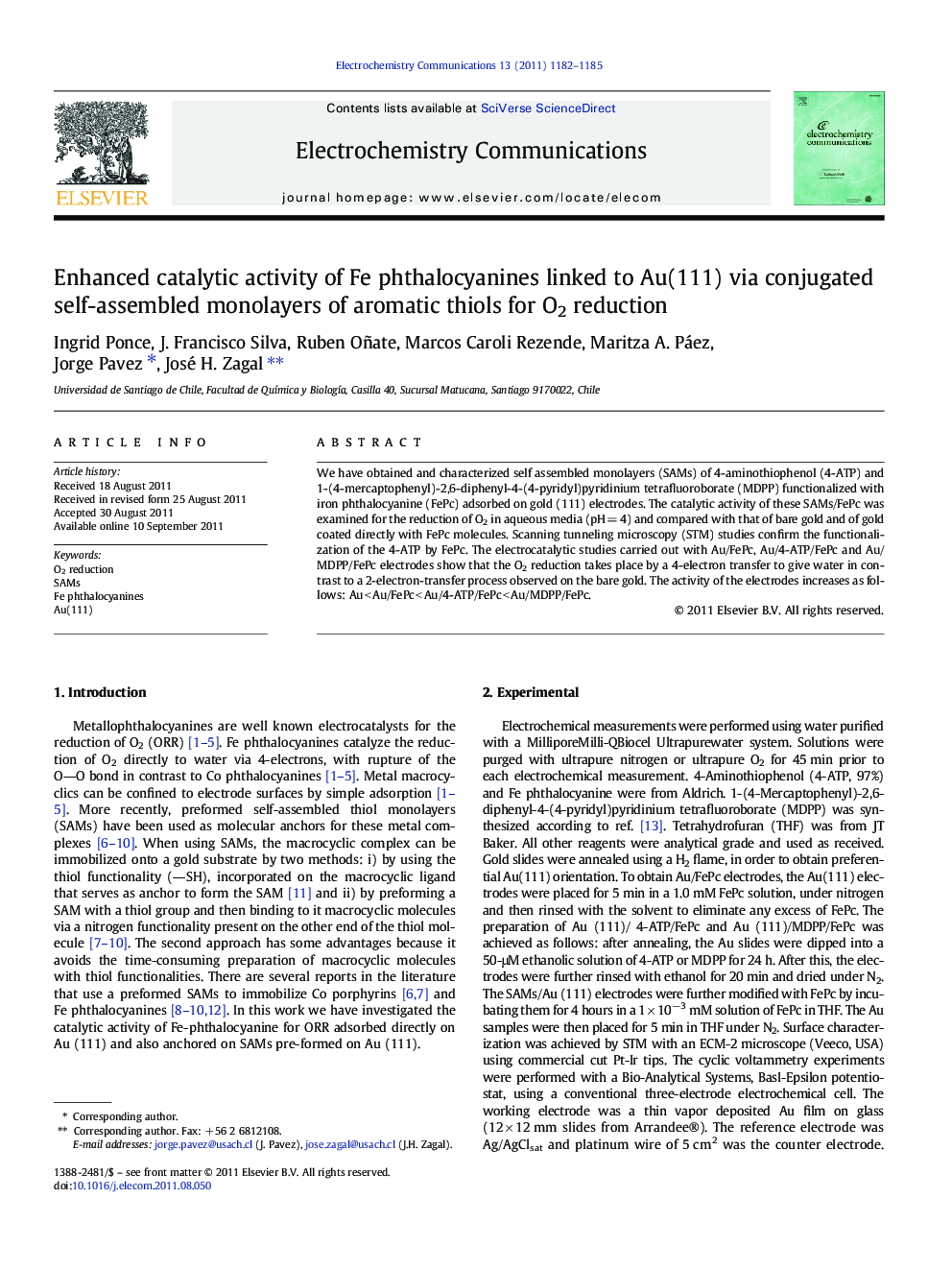| Article ID | Journal | Published Year | Pages | File Type |
|---|---|---|---|---|
| 180113 | Electrochemistry Communications | 2011 | 4 Pages |
We have obtained and characterized self assembled monolayers (SAMs) of 4-aminothiophenol (4-ATP) and 1-(4-mercaptophenyl)-2,6-diphenyl-4-(4-pyridyl)pyridinium tetrafluoroborate (MDPP) functionalized with iron phthalocyanine (FePc) adsorbed on gold (111) electrodes. The catalytic activity of these SAMs/FePc was examined for the reduction of O2 in aqueous media (pH = 4) and compared with that of bare gold and of gold coated directly with FePc molecules. Scanning tunneling microscopy (STM) studies confirm the functionalization of the 4-ATP by FePc. The electrocatalytic studies carried out with Au/FePc, Au/4-ATP/FePc and Au/MDPP/FePc electrodes show that the O2 reduction takes place by a 4-electron transfer to give water in contrast to a 2-electron-transfer process observed on the bare gold. The activity of the electrodes increases as follows: Au < Au/FePc < Au/4-ATP/FePc < Au/MDPP/FePc.
Graphical abstractFigure optionsDownload full-size imageDownload as PowerPoint slideHighlights► Fe phthalocyanine (FePc) deposited on gold surfaces catalyses the O2 reduction reaction. ► Catalytic activity of FePc for ORR is enhanced when linked to Au via self-assembled monolayers of aromatic thiols. ► The enhancement is greater for bulkier and longer aromatic spacers. ► A 4-electron pathway for ORR predominates for bulkier aromatic thiol spacers linked to FePc. ► The rate-determining step in all cases is the same, irrespective of the FePc distance from the gold surface.
